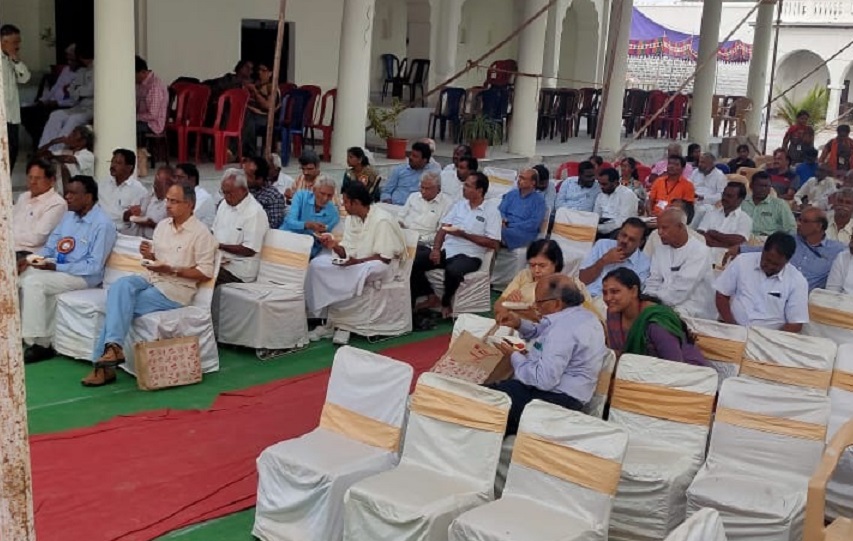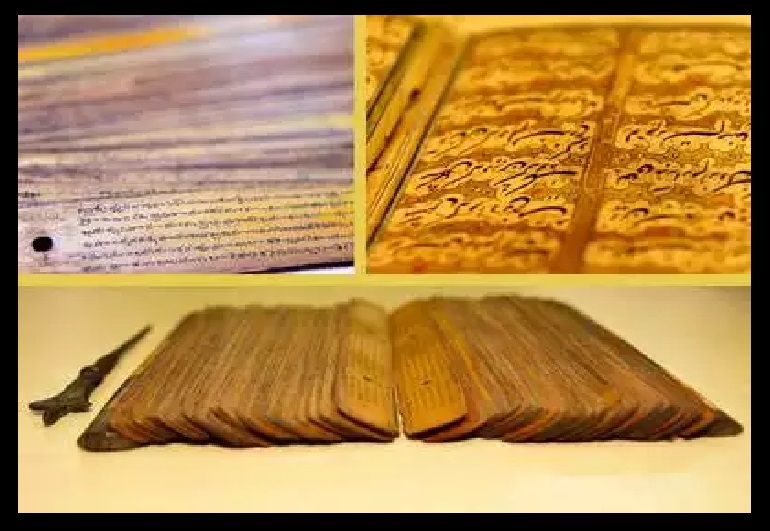Why Indian ancient scripts are disappearing, classical languages ignored and inscriptions abandoned?

Many Indian languages and scripts disappearing: Vaani (dialect) changes every 4 kos – roughly 12 km – and paani (water) after every 8 kos[1]. This is a famous saying in Bihar, which is struggling to keep its many languages and scripts alive, with some now listed as endangered[2]. In September 2022, the Bihar government pledged institutional support to eight languages[3]: Sanskrit, Maithili, Bhojpuri, Magadhi, Angika, Bajjika, Bangla and Surjapuri. However, experts say a language needs care, and political and social patronage, to develop and flourish[4]. “If my language is looked down upon by society, how will I feel proud of it? If there is no job opportunity in linguistics, why should one opt for a language?,” asks Sweta Sinha of IIT-Patna. “In the Hindi belt, most people list Hindi as their mother tongue, not Bhojpuri or Magahi.” The 2011 Census listed 1,369 mother tongues in the country. But many such languages and scripts are either no longer spoken or are slowly going extinct. “The state government created various academies for the development of languages. But the academies’ directorships became political posts,” says Subhash Sharma, former development commissioner of Bihar and author of Bhasha Aur Lipi Ka Itihaas.

Buddha’s language: Pali is the language of Buddha’s sermons. It is taught in Allahabad, Magadh and Patna universities. Till 2013, UPSC aspirants could opt for it as a subject. “The good news for Pali is that the language is not yet dead. At least one lakh people speak Pali across the country. It is now being taught at Fergusson College, Pune, and several other universities in Maharashtra. But there is a need to do more for this language,” says Dinkar Prasad, additional commissioner (admin), Darbhanga Division. He is a PhD in Pali with a gold medal from Delhi University and has taught the language to many UPSC aspirants. “The governments of UP and Bihar should at least introduce this language in Class 12, if not for PG and graduation. Buddha was born, found enlightenment, gave his first sermon and attained Mahaparinirvana in these two states. Most of his sermons are in Pali… It must be reintroduced in UPSC as an option,” Prasad adds.

Importance of language and literature: Ambedkar gave importance to “Pali,” and thus, his compiled work has been aptly titled, “Pali and Other Sources of the Buddha and His Dhamma with an Index – Supplement” Vol.II, thus, Indians must have given more importance to Pali than the politicization of Ambedkar and Buddha. The preservation and conservation of language protects the literature of it and the literature the history. At least, at school and college levels, they should have been included in the syllabi, particularly, where, the subjects like ancient languages, religion, history, archaeology, epigraphy and similar subjects are taught. By going on reading the translations, producing interpreted versions of discourses and printed narratives would not give the true facts containing the original language and literature. No expert, researcher or scholar can be biased in learning and teaching the subjects lke epigraphy, linguistics, archaeology, history etc., and with the expertise of the ancient languages, they cannot read any inscriptions.

Old documents in Kaithi: Bihar government offices used the Kaithi script till the early 1900s. Now, it isn’t easy to find people who understand it. “In Bihar, most court cases are related to land disputes and many old land documents are written in Kaithi,” says Bhairab Lal Das, author of a book on the history of the Kaithi script. Jayant Kumar, a professor at NIFT, Patna, has been working on developing key fonts in the Kaithi script. “The state government recently organised a crash course on Kaithi in Tilka Manjhi Bhagalpur University with 30-40 participants. This is a very good sign. For the development of any language or script, it must be used in regular writing or reading in society,” he says.

Only official native language: Maithili is the only native language of Bihar in the Eighth Schedule of the Constitution, which lists India’s official languages. Its script known as Mithilakshar or Tiruhata is one of the oldest scripts in which Sanskrit is written. After a long-drawn agitation in the Mithilanchal region, Maithili was included in the Eighth Schedule in 2003. It was also included as an optional subject in UPSC. However, Bihar Public Service Commission is yet to include it as an optional subject in exams, says Aruna Chaudhary, head of Maithili department at Patna University. “Moreover, teaching this language has been discontinued in most Patna University colleges as there are few takers,” she adds. Madan Mohan Jha, a Maithili-speaking schoolteacher, says: “I am from Mithilanchal. I speak Maithili with my mother and wife. But my kids don’t want to speak it.”

Inferiority complex: Nearly 30km east of Patna, at Pali village, people speak Magahi in a dialect different from Patna’s. And if you travel 50km west from Patna, people in Jehanabad, speak it differently. Similarly, Bhojpuri, prevalent in Bhojpur, Buxar, Kaimur, Rohtas, Saran, Siwan and Gopalganj, is spoken differently in Chhapra, Ara and Sasaram. “Bhojpuri is limited to villages or the downtrodden people. If you speak Bhojpuri or Magahi in Patna, people look down upon you. You will seldom find two Bhojpuri or Magahi-speaking people talking in their mother tongue. Maithili is the only language people can be heard talking in. That’s why Maithili is placed better than other Bihar languages… My kids don’t want to speak Bhojpuri because they have an inferiority complex about the language,” says Vishnu Kant Tiwari, a Bhojpuri speaker.
(With inputs from B K Mishra and Abhay Singh).

The problems in the epigraphy and the job of epigraphists[5]: Just like getting a diploma and becoming “archaka,” anybody with a “diploma in epigraphy” can apply and get the job of “epigraphist.” The following points have to be considered seriously in the context[6]:
- Under the guise of protecting and preserving “classical languages,” much controversies and issues are created than real research useful for the furtherance of the languages.
- Day by day, the learned epigraphists have also been disappearing and the required strength is not filled up. By promotion or by recruitment, new epigraphists may come and occupy the posts, but, most of them are not in a position to decipher and read the inscriptions.
- Just because, funds are received, many govt and non-govt. agencies have started epigraphy cources part time/ full time, one month / one year, on-line / off-line and of different varieties. They may get a certificate and apply for the post of “epigraphist” and get also, but, what they can contribute to the Indian epigraphy is not known.
- As otherwise, none need to worry or lament about the disappearance of script, language and literature. The real faith lies in the practice, propagation and continuance of them, so that such expertise is passed on from one generation to generation.

Government allocates funds for epigraphy: The finance minister in her Budget Speech made an announcement to set up Bharat Shared Repository of Inscriptions (BharatSHRI), a digital epigraphy museum, with digitization of one lakh ancient inscriptions in the first stage[7]. The BharatSHRI will be set up by the Archaeological Survey of India at Hyderabad[8]. The Epigraphy Branch conducts Epigraphical survey, copies the inscriptions, deciphers them and publishes the gist in its Annual Report on Indian Epigraphy and publishes the texts in other epigraphical publications like South Indian Inscriptions, Epigraphica Indica, etc. Whenever, the Epigraphy Branch gets any information on newly discovered inscriptions either from Excavation Branch of ASI or any State Govt. Agency, immediate action is taken to copy and decipher them. Thus, though, many activities have been going on, yet, the persons capable of reading inscriptions have been dwindling down. The seriousness of such conditions is not discussed, but, protests and demonstrations are carried on by the Epigraphy department for fringe issues. Real expertise, wisdom and knowledge are not used for the decipherment, translation and publication of the existing inscriptions. The requirement for such expertise for the future is also not anticipated, persons trained and kept ready to continue the work.
© K. V. Ramakrishna Rao
15-01-2024

[1] Times of India, Buddha’s language is fighting extinction, and it’s not alone, Rakesh Roshan / TNN / Jan 14, 2024, 08:09 IST.
[2] https://timesofindia.indiatimes.com/india/buddhas-language-is-fighting-extinction-and-its-not-alone/articleshow/106826168.cms?from=mdr
[3] News NBS.24, Buddha’s language is fighting extinction, and it’s not alone, Rakesh Roshan / TNN / Jan 14, 2024
[4] https://news.nbs24.org/2024/01/14/972775/
[5] K. V. Ramakrishna Rao, What is the real problem with Indian Epigraphy department, Epigraphists – Cadre Restructure, Niti Ayog Report or change of Act and Rules!, Posted on July 31, 2021.
[6] https://kvramakrishnarao.wordpress.com/2021/07/31/what-is-the-real-problem-with-indian-epigraphy-department-epigraphists-cadre-restructure-niti-ayog-report-or-change-of-act-and-rules/
[7] PIB, The annual outlay for Ministry of Culture in FY 2023-24 increased by 12.97% to Rs. 3,399.65 Crore, Posted On: 01 FEB 2023 7:03PM by PIB Delhi
[8] https://pib.gov.in/PressReleaseIframePage.aspx?PRID=1895497

Filed under: 12000 years of Indian culture, academic, academicia, accounts, Angika, anthropology, antique, antiquity, archaeological remains, archaeological sites, archaeological survey of India, archaeology, Bajjika, Bangla, Bhojpuri, Brahmi, Brahmi potshred, Brahmi script, buddha, Buddhist, buddhist claim, Buddhist relic, buddhist site, c-14, caste, category, certificate, chaitya, chalcolithic, character, chronology, collection, conduct, conservation, date, demythologization, digital, digitization, Dravidi, evidence, evolution, geo-archaeology, geoarchaeology, historicity, historiography, history ideology, history usage, history useful, indology, indus script, indus symbol, inscription, Magadhi, Maithili, manuscipt, manuscript, manuscriptologist, Manuscripts on Medical Sciences, megalith, megalithic, mesolithic, paleolithic, palm leaf manuscript, prakrit, prehistoric sites, preservation, publishing, relic, research, sanscrit, surjapuri, Tamil Brahmi, Tamil inscription, Tamil manuscript, Tamil manuscripts, tamili, tamizhi | Tagged: Angika, archaeology, ASI, Bajjika, Bangla, Bhojpuri, bihar, Brahmi script, buddha, buddha statue, buddhism, Buddhist, buddhist claim, buddhist site, epigraphist, epigraphy, history, India, indus, indus script, language, literature, Magahi, maghada, Maithili, sanskrit, script, sign, surjapuri, symbol, Tamil Brahmi, tamili, tamizhi | Leave a comment »


























































































